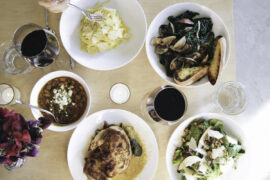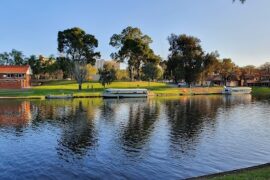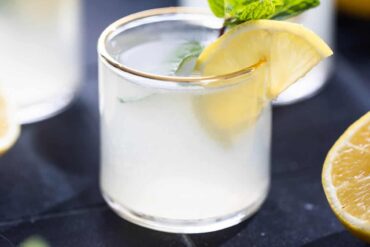A Handy Guide for Parents: Master the Cooking Conversion Chart Australia
Hi there, amazing parents of Australia! Are you eager to venture into your kitchen, whip up a culinary storm, but keep getting stuck on those bewildering cooking measurements? Well, we’ve got you covered! This handy guide will equip you with understanding of the cooking conversion chart in Australia, making your kitchen adventures easier and more fun!
Decoding the Cooking Conversion Chart
As enjoyable as cooking might be, the challenge for many of us lies in understanding those confusing measurements. Teaspoons, tablespoons, ounces, cups – sometimes, it’s a sure recipe for a headache!
What’s More?
Sure, we’ve taken many math classes in our lives, but when it comes to converting grams to cups or ounces to millilitres in the middle of a cooking session, it can make your head spin! But don’t worry, we’re here to help unravel this mystery.
Most importantly, remember you’re not alone in this. Everyone from seasoned chefs to amateur cooks has stumbled upon these measurement conversions at some point. So let’s turn this culinary obstacle into a piece of cake!
Why Use a Cooking Conversion Chart?
Before we plunge into the nuts and bolts of cooking measurements, let’s address a burning question.
Why do we even need a cooking conversion chart?
Well, first and foremost, it ensures that you follow recipes accurately. By ensuring correct quantities, you’re one step closer to creating delicious meals for your loved ones. Secondly, it helps you swap easily between different measurement systems, especially if you’re using international recipes. And lastly, it’s a total lifesaver when you’re scaling recipes up or down.
Stay connected with us as we deep dive into the world of cooking measurements, unravel cooking conversion charts and help turn you into a culinary maths whiz in no time!
Happy cooking, lovely parents!

Understanding Basic Units and Measurements
Before delving into conversions, familiarize yourself with common kitchen measurements. In Australia, we typically use the metric system, measures include millilitres (ml), litres (L), grams (g), and kilograms (kg).
Smaller units:
Teaspoon (tsp), tablespoon (tbsp), and cup are also with us in our culinary adventures!
Keep in mind, a teaspoon is not just any small spoon but a specific measure equalling 5ml. Similarly, a tablespoon equals 20ml (and not 15ml as in the U.S). A cup is 250ml.
Handy Measures to Remember
A lot of common ingredients have standard equivalents:
Butter:
1 tablespoon of butter equals 20g.
Honey/Syrup:
1 teaspoon of honey or syrup equals 7g.
Flour/Sugar:
1 cup of all-purpose flour or sugar equals 200g.
Cooking Conversion Chart Australia: Simple Conversions
Let’s take a look at some quick conversions:
Dry measures:
1 teaspoon = 5 grams
1 tablespoon = 20 grams
1 cup = 200 grams
Liquid measures:
1 teaspoon = 5 millilitres
1 tablespoon = 20 millilitres
1 cup = 250 millilitres
Using Online Converters
In today’s digital age, online converters can be your best pals! Websites like ‘convert-me.com’ allow you to input the unit you want to convert from and to, and then does the maths for you!
Wrapping Up
Remember, cooking is not about being super precise or exact (unless of course, you’re baking)! It’s about having fun and exuding lots of love into your food. Don’t let these metrics and measures shoo you away. Embrace the cooking conversion chart and see how much easier (and enjoyable) your cooking becomes!
Don’t forget to share this delightful guide with your parent-friends. Here’s to more delectable and well-measured dishes gracing your dinner tables!
Happy Cooking, Australia!
Preparing for Cooking Conversion Chart Australia: A Guide for Parents
Proper preparation and knowledge of cooking conversion can significantly improve your cooking experience. Below, you’ll find five things that every parent should know when preparing for a Cooking Conversion Chart in Australia.
1. Understand Metric Measurements
The Australian cooking system primarily uses metric measurements, unlike the US system which operates with pounds and ounces. Familiarize yourself with grams, kilograms, milliliters, and liters, the most commonly used units in Australia.
2. Know the Conversion for Oven Temperatures
Oven temperature conversions between Fahrenheit (used in the US) and Celsius (used in Australia) are essential to ensure your dishes are cooked to perfection. An effective conversion chart should showcase such comparisons.
3. Cup Measurements Differ
In Australia, a standard cup holds 250ml, whereas, in the US, it equates to 237ml. Similarly, knowing how many milliliters are in a tablespoon or teaspoon can be handy when following an Australian recipe.
4. Familiarize With Common Ingredient Conversions
Popular ingredients such as flour, sugar, or butter have specific conversion rates. Familiarizing yourself with these can ensure accurate measurements, a key factor to ensuring a successful dish.
5. Utilize Online Conversion Tools
Helpful online tools can make conversions quick and easy. Simply input your unit or ingredient into these digital converters to get the accurate Australian equivalent.
In conclusion, understanding the Australian cooking system is simple with a comprehensive conversion chart that helps streamline kitchen measurements. Just remember the five useful tips above, and your cooking experience will be a breeze. Happy cooking!
For more great articles please see here. For more information see here
Disclaimer
The articles available via our website provide general information only and we strongly urge readers to exercise caution and conduct their own thorough research and fact-checking. The information presented should not be taken as absolute truth, and, to the maximum extent permitted by law, we will not be held liable for any inaccuracies or errors in the content. It is essential for individuals to independently verify and validate the information before making any decisions or taking any actions based on the articles.




